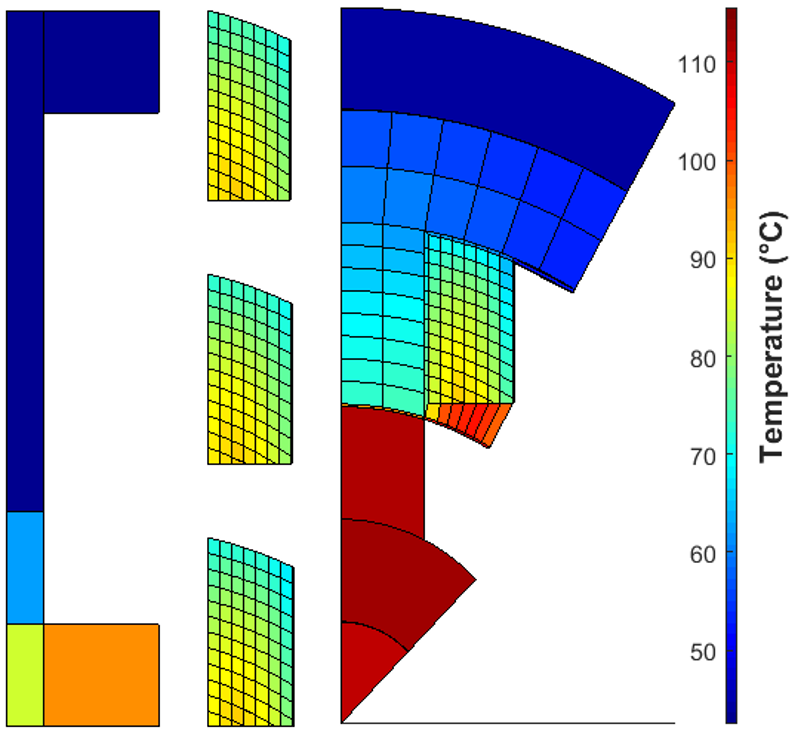Probleemstelling:
When designing electric motors for automotive traction applications, not only electromagnetic but also thermal simulations play a major role. The ability of the motor to evacuate heat determines its performance. The more performant the cooling system, the more compact the drive train can be made. When designing electric motors for different applications it is required to have fast, yet reliable, scalable thermal models. These models predict the temperature of the different components (windings, magnets, iron, copper,…) in the machine for a given heat load. Based on constraints on the maximum temperature for different components, the performance of the motor can be predicted.
A detailed thermal model can be made for a specific motor design using 3D finite element calculations. This will result in an accurate, yet slow motor thermal model. When performing motor design or selection, a lot of motors in a certain design space need to be evaluated. A parameter of such a design space can for instance be the axial length of the motor. To this end, a fast and scalable thermal motor model is required to perform many evaluations in the given design space to come to an optimal motor design. Dana has a fast and scalable tool to evaluate electromagnetic motor performance but is lacking for thermal simulations where often time-consuming simulations need to be performed.
 |
|
| High-RPM permanent magnet electric motor | Existing tool of Ghent University |

